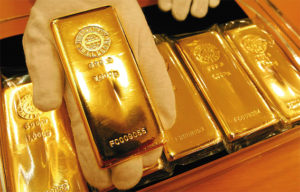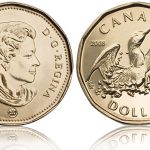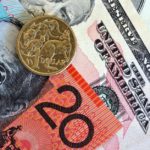 Gold continued to trade lower on the day following a batch of mixed data from the U.S., which added to the uncertainty over a possible tapering of Feds monetary easing program in September. Silver, platinum and palladium remained on negative territory.
Gold continued to trade lower on the day following a batch of mixed data from the U.S., which added to the uncertainty over a possible tapering of Feds monetary easing program in September. Silver, platinum and palladium remained on negative territory.
On the Comex division of the New York Mercantile Exchange, gold futures for December delivery traded at $1 395.70 per troy ounce at 14:47 GMT, down 1.22% on the day. Prices held in a range between day’s high and low of $1 411.10 and $1 392.10. The precious metal slipped 0.9% on Thursday and plunged to negative territory on a weekly basis following Friday’s losses.
Gold remained pressured throughout the day following yesterdays upbeat U.S. data, which strengthened the dollar. On Friday, mixed economic data added to the uncertainty whether the Federal Reserve will pare its $85 billion bond purchasing program next month or not.
The Commerce Department reported today that Personal Income rose by 0.1% in July, underperforming analysts expectations for a 0.2% increase and the preceding periods 0.3% gain. Consumer purchases (Personal Spending), which account for around 70% of the economy, rose by 0.1% last month, mismatching projections for a 0.3% surge. Junes reading received an upward revision to a 0.6% advance from the initial 0.5%.
The agency also reported that Core Personal Consumption Expenditures rose by 0.1% month-on-month, down from 0.2% in June. The index marked a 1.2% advance on annual basis, matching the preceding periods increase but underperforming expectations by 0.1%.
Gus Faucher, senior economist at PNC Financial Services Group Inc. in Pittsburgh, said for Bloomberg: “It’s difficult for consumers to increase their spending as Americans face concern about the stability of the labor market, whether they’re going to have their jobs as well as the need to rebuild savings.”
Meanwhile, despite beating forecasts, U.S. consumer sentiment retreated from Julys six-year high. The Thomson Reuters/University of Michigans final reading on the overall index on consumer sentiment fell to 82.1 in August, surpassing expectations for a drop to 80.5 and Augusts flash reading of 80.0, but falling well below Julys six-year high of 85.1. Sentiment declined as higher mortgage rates are threatening to slow down the housing markets recovery, while geopolitical turmoil in Egypt, Syria and supply disruptions in Libya are raising the prospects for increasing fuel prices.
A separate report showed that the ISM-Chicago Business Survey marked an expansion in the economic activity of the region. The Chicago Purchasing Managers Index matched expectations for a rise to 53.0 in August from 52.3 in June. Levels above the neutral 50 level indicate expansion of the respective sector.
Richard Curtin, survey director, said in a statement: “Most of the late August gain was due to more favorable income expectations, with consumers expecting the largest income gains in nearly five years, although the median expected increase was just 0.9 percent, less than the expected rate of inflation.”
Gold was initially pressured on Thursday following the release of upbeat U.S. economic data, which outperformed analysts’ projections. The Commerce Department reported that the U.S. economy grew more in the second quarter than previously estimated in July. The U.S. Preliminary (Revised) GDP marked a growth of 2.5% from a year earlier, compared to the flash reading of 1.7% published on July 31 and surpassing analysts’ expectations for a correction to a 2.2% advance. Investments in housing accounted for almost a fifth of the economy’s growth during the respective three months.
Meanwhile, the Department of Labor reported that fewer people than anticipated filed for initial jobless payments last week. In the week ended August 24, U.S. initial jobless claims fell to 331 000, beating forecasts for a drop to 332 000 from the preceding period’s upward revised reading of 337 000 claims.
The dollar index, which tracks the greenbacks performance against a basket of six major counterparts, rose by 0.29% to a four-week high of 82.24 at 14:46 GMT. Days low stood at 81.94. The U.S. currency gauge marked a third consecutive daily gain and extended its weekly advance to 1% after adding 0.3% in the preceding two five-day periods. Dollar-denominated commodities tend to trade inversely to the dollar as strengthening of the greenback makes them more expensive for foreign currency holders and limits their appeal as an alternative investment.
The precious metal rose to a 3 1/2-month high on Wednesday as safe-haven buying continued to underpin the market following the escalating tension in Syria. Both oil and gold however retreated from multi-month highs amid easing concern over an imminent U.S.-led attack against the Syrian regime. The U.K. House of Commons voted to reject a proposal by Prime Minister David Cameron for an attack against the Syrian regime on Thursday. U.S. Defense Secretary Chuck Hagel said that the United States won’t attack without allies.
Peter Hug, the global trading director of Kitco Metals Inc., said in a report.: “Many believe that the Fed will announce changes to its stimulus policy in September. Notions of an imminent U.S. military attack on Syria have receded significantly the past 48 hours, putting pressure on gold.”





